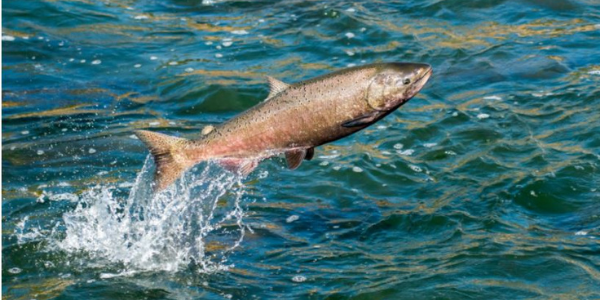
By Willa Jeffers, Washington State Chapter Legislative Organizer
This year Tribes from around our state worked with Governor Inslee’s office to request the largest habitat protection and restoration program for salmon recovery to date. While the bill failed to pass this year, the session was not without successes for salmon recovery efforts.
Washington State’s salmon runs are in peril, with many runs listed under the Endangered Species Act. Heat waves, outmoded dams, declining snowpack, pollution, and urban sprawl are all contributing factors that continue to jeopardize the recovery of this iconic species.
Indigenous communities have been pushing for more effective salmon protection for years, and Governor Inslee responded by coming to the table to create HB 1838, the Lorraine Loomis Act for Salmon Recovery, which would help to protect salmon across the state of Washington.
Lorraine Loomis was a Swinomish tribal leader who fought for treaty fishing rights in Western Washington for over 40 years. Loomis passed in 2021 and left a legacy of tireless advocacy for salmon. Her namesake bill aimed to build on her lifetime of work by developing a stronger regulatory approach to reinvigorate our streamside ecosystems.
HB 1838 would have required stronger buffer zones around rivers and streams, with tall enough trees and vegetation to provide much needed shade - keeping waters cool enough for salmon. This approach follows best available science and the ecological knowledge of the tribes who have co-existed with salmon for thousands of years.
Unfortunately, the bill was met with major opposition from those calling for less effective, voluntary approaches. The reality is that after more than 20 years of opt-in programs we are still facing critically low salmon populations. Band-aid approaches are no longer enough if we’re serious about saving salmon in our waters.
While the Lorraine Loomis Act did not pass in 2022, there were strong funding measures included in the supplemental budget that laid the groundwork for legislation in 2023. These included:
- A riparian work group made up of stakeholders to plan and discuss legislation
- A gap analysis study of voluntary programs to understand where they are lacking efficacy
- Stream mapping assessments to pinpoint our most at risk waterways.
The information gathered from these stakeholder processes and assessments will allow the salmon coalition to bring forth a strong, science-based bill that we hope to see pass the legislature in 2023.
The Washington State Chapter has also been engaged in ongoing stakeholder work to restore the Snake River and bypass the four lower Snake River Dams. Funding for a study to continue the critical work to remove these dams passed the legislature this year, you can read more about our work here.
Indigenous texts from across the country have referred to the Pacific Northwest as “Salmon Nation”, the part of North America where salmon reign in culture and cuisine, carrying generations of sustenance and tradition. We have a responsibility to follow and support our Tribal partners in the pursuit of healthy and robust salmon recovery. The challenges facing salmon in a warming climate will only get more severe in the years ahead. That’s why we need urgent and bold action. If you’d like to help support our legislative agenda in upcoming sessions, please contact Jesse Piedfort at jesse.piedfort@sierraclub.org.
Take action to support meaningful salmon protection and Join us at the Stop Salmon Extinction Rally on Saturday, April 2nd from 10:00 to 1:00 in Olympia, WA! There will be inspiring speakers and a processional to the Capitol Campus for lunch and the Human Orca Mural. Gov. Inslee will be invited to greet us. We hope to see you there!